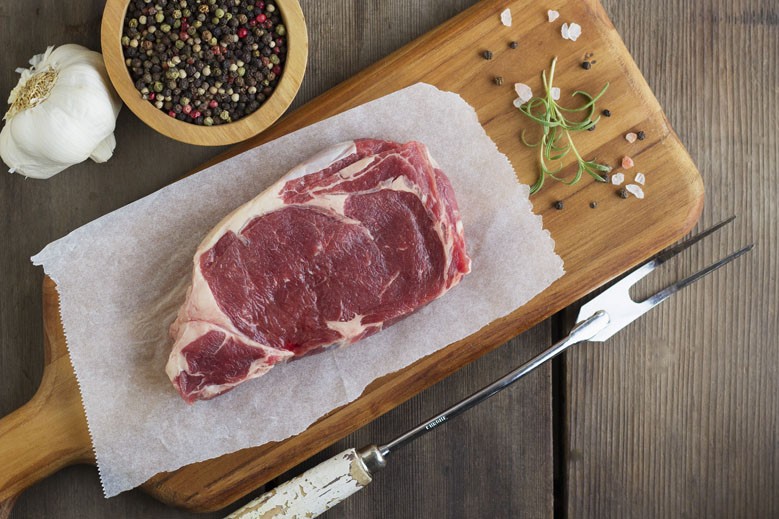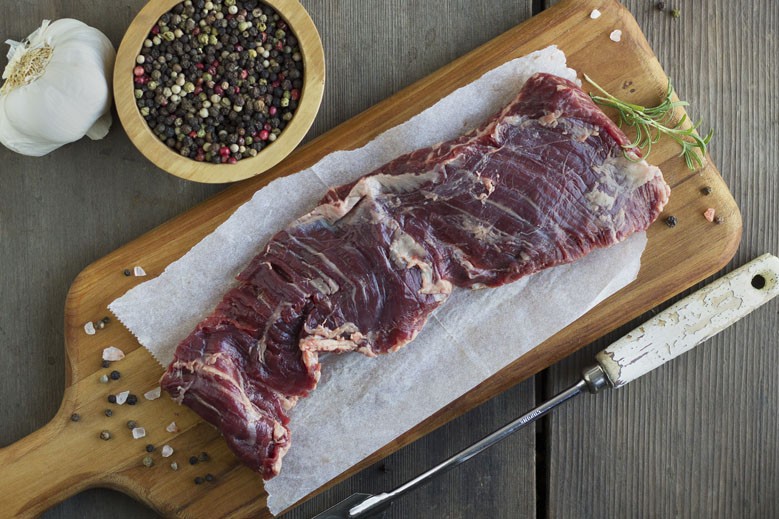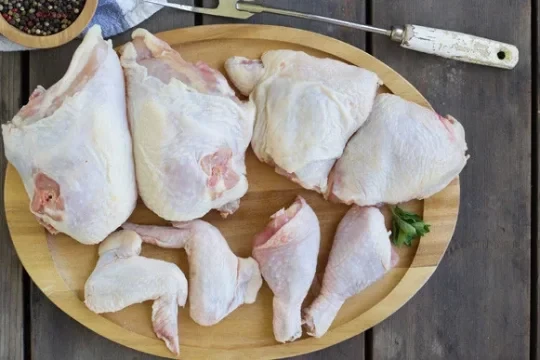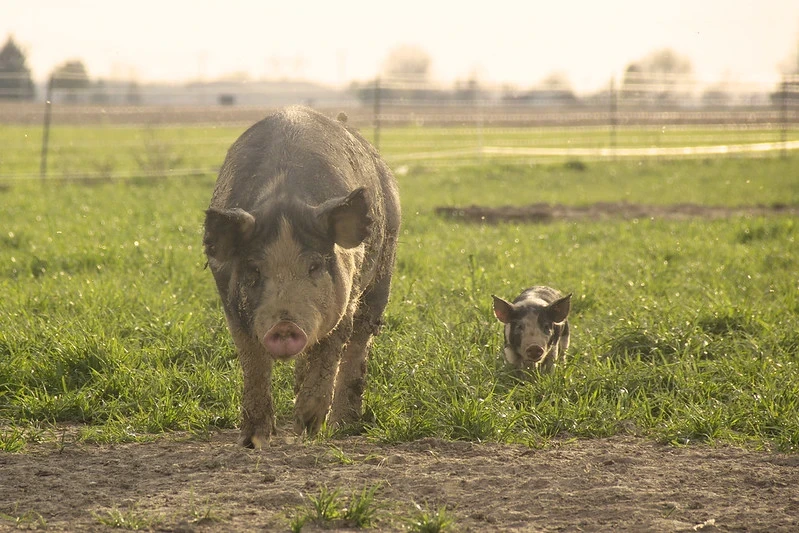The Ultimate Steak Buying Guide
posted on
May 1, 2019
The purpose of this video is to make you more educated when it comes to buying steak. Shopping for these cuts can be intimidating because there are lots of names/types, and you can easily spend a lot of money, but still have a poor experience.
In this video, we are going to help you take the stress out of buying steak and feel like the most-educated person at the dinner table.
What makes a good steak?
Tenderness
For everyone who appreciates texture more than flavor, the tenderness of a steak is going to make the right experience for you. Tenderness is determined by both fat marbling (the amount of intramuscular fat), and connective tissue (mostly determined by how much the muscle is used by the cow).
Flavor
For folks who appreciate more intense beefy flavors and don't mind a little chew, you're going to want to explore your cuts. There are many different cuts, and some of a slew of different names, but a lot of times you're more likely to find higher flavor in the less popular cuts (skirt, hanging tender, etc.).
Of course, there are lower value cuts that still lack flavor, so this does take some exploring. I highlighted some of my favorites in the video above.
What about color?
A lot of people get hung up on color and use it as a visual guide to help determine freshness and quality. There are SOOO many factors that can determine meat color, it really is not helpful hear. In fact, meat that is bright cherry red is often thought to be the freshest and therefore is highly sought after by consumers.

However, fresh meat right after it has been cut will actually have a much deeper purple/red hue and will stay this way if it's frozen properly in vacuum packaging. It will only turn cherry-red, after it has been set out and exposed to oxygen.
So if you're ever concerned that your meat has been spoiled, your nose is going to be a more reliable tool than your eyes.
Two MYTHS about grass-fed steak/beef
(1) Grass-fed beef is too lean!
Unfortunately, in the early days of grass-fed beef, this could have been an experience for people because much of the first beef marketed as grass-fed would have been old dairy cows which were mostly raised on grass and would have been much leaner (they're bred for milk production, not beef).
(2) Grass-fed beef tastes gamey!
This also could have been an unfortunate experience for some, but back to the answer for myth #1, it's not hard to see why. Any dairy animals marketed as grass-fed, would have been older cows who weren't intended for meat production, and yes, could have taste gamey, similar to deer meat.
Cooking Temps and Tips
(1) Five-degree rule.
It's important to know that steak will continue to cook even after it has been pulled from the grill. I've outlined the internal cook temperatures next to the desired doneness, but it's important to remove the steak from the heat 5 degrees prior to the desired doneness.
(2) Let it REST!!
This cannot be stressed enough. If you cut into the steak too early, you'll lose much of the juices and moisture we all love. When you let the steak rest for 10 minutes, it relaxes and the moisture returns to the muscle fibers instead of making a mess on your plate.
(3) Reverse Searing
If you don't have access to a grill, you can still achieve excellent tasting steak in the kitchen. A method called reverse searing lets your oven do most of the work and is even preferred over grilling by some. There lots of helpful instructions for this on Google/YouTube.

Explore the cuts
Below I've highlighted some of our favorite cuts and wrote my thoughts on their fat marbling, tenderness, cost and cookability (yes, I made up that word to stand for how easy each cut will be to prepare and carve).
Filet Mignon

The Cut | The Filet Mignon comes from the tenderloin, which is a muscle that is hardly used.
Fat Marbling | The filet is learner than some other popular cuts, but since it has little connective tissue, you won't have the same chew of other lean cuts.
Tenderness | This is the most tender cut of beef, so for those who highly desire texture, the filet is king!
Cost | $$$
Cookability | This cut is relatively easy to prepare, but the circumference can vary, so you need to adjust cook times from package to package.
Delmonico Ribeyes

The Cut | The Delmonico comes from a tender part of the rib section, which is why it's often referred to as a Ribeye or Rib Steak.
Fat Marbling | One of, if not the most marbled cut on the animal. It has an amazing amount of intramuscular fat that breaks up the muscle and provides a fantastic eating experience.
Tenderness | Combined with the high marbling, and being sliced against the grain of muscle fibers, this steak is both tender and easy to cut.
Cost | $$
Cookability | Delmonicos are some of your most consistent cuts, which makes it easy to get in a routine to prepare.
New York Strip

The Cut | Cut from another part of the loin that is doesn't get much use from the animal.
Fat Marbling | Typically leaner than Delmonico, but still a great amount of marbling.
Tenderness | High marbling, plus less connective tissue makes the strips highly desired.
Cost | $$
Cookability | Same story as Delmonico, consistent and easy to get into a routine to prepare.
Sirloin

The Cut | sliced from another tender part of the loin, and is from the same muscle as your sirloin Roast.
Fat Marbling | Typically a leaner cut, with only little visual signs of marbling.
Tenderness | Tender, but more chew than the Filet, but also sold at a much lower price point.
Cost | $
Cookability | Easy to prepare and easy to cut. A great steak for beginners!

Skirt Steak

The Cut | Skirts are actually a diaphragm muscle just below the rib. There's only a few per animal.
Fat Marbling | This cut has lots of intramuscular fat than run along the grain with the meat, which is different, but still ads that same great flavor.
Tenderness | Skirts are tender, but need to be cut carefully. If cut on it's width the same way as the grain, it will eat a little stringy. Important to slice against the muscle grain on this one.
Cost | $
Cookability | Skirts are thin and very easy to overcook. Best to watch these ones carefully.
Hanging Tender

The Cut | Another diaphragm muscle, and shares many attributes as the Skirt and Filet.
Fat Marbling | Both Skirts and Hanging Tenders are highly underrated in my opinion. The fat looks strange and different from typical marbling, but it's definitely there and achieves the same thing.
Tenderness | Hanging Tenders live up to their name, and their texture is similar to a filet. The entire cut actually just looks like a smaller version of a tenderloin (the muscle Filets are cut from).
Cost | $
Cookability | These can be difficult to cook evenly because one end usually starts out thick and tapers to a point on the other. But some extra attention by utilizing hot/cool parts of the grill can solve that.
Flat iron

The Cut | Flat Iron is cut from the shoulder and can sometimes be referred to as a blade steak.
Fat Marbling | Great fat marbling on this cut, but it can sometimes include facia membranes if not cleaned properly.
Tenderness | The shoulder gets more work than most the cuts mentioned above so there can be more connective tissue.
Cost | $
Cookability | Like the Sirloin and Strips, this steak is very easy to work with. Because of the lower cost, it is often used in dishes like stir fry, or even cut for steak sandwiches.
I hope this has been helpful.
ACTION ITEM: In the comment section below, share (1) what your current favorite steak cut, and (2) what new cut are you up for trying next?




